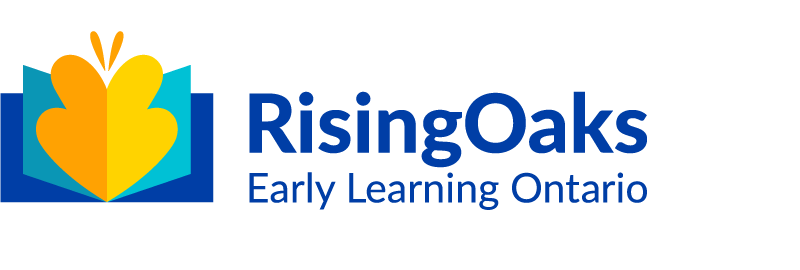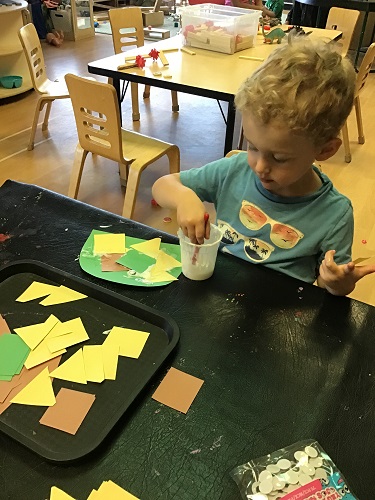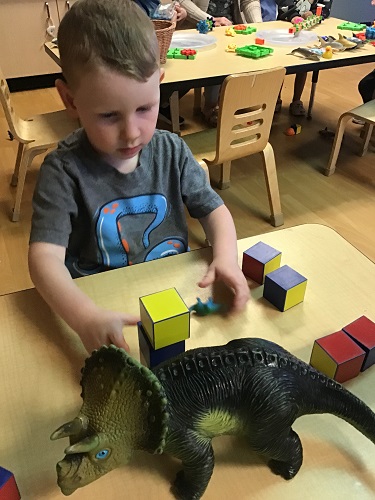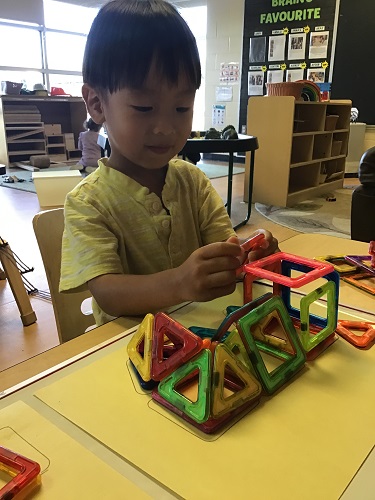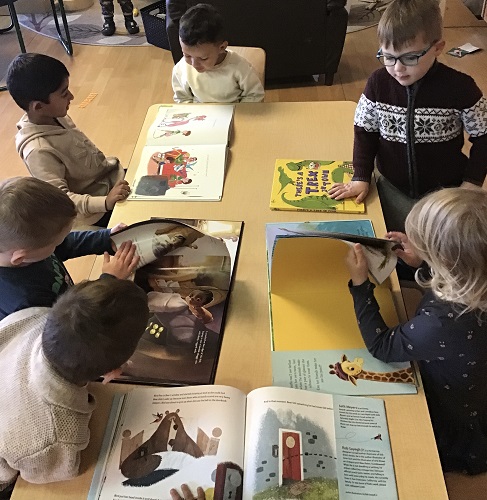The preschool children and educators engaged in learning together about dinosaurs through open-ended play, activities, and exploration. At the creative table, the children had the chance to create their own dinosaurs. The children were equipped with glue and construction paper cut into various shapes. The primary bodies of the dinosaurs were created from green or yellow shapes, as either triangles or half-circles. There were also smaller shapes in brown, yellow, and green, along with googly eyes for the children to use as they wished. When asked about her creation, Sacarra replied, “It’s a dinosaur.” Anna D stated, “Mine’s actually going to be a car.” When Educator Nicole inquired about Ruby’s project, she answered, “I’m making a scary dinosaur, it says roar.” The children enjoyed the opportunity to use their imagination and design their own dinosaurs while utilizing their communication skills to share their ideas with peers and educators. They also connected their art to other toys in the room, noticing the dinosaurs present in the tuff tray. Grayson informed Nicole, “There is a dinosaur on my shirt, take a picture with my dinosaur.”
The following day, the children participated in a math activity that involved measuring the height of the dinosaurs using blocks. Grayson positioned the blocks next to his dinosaur and remarked, “It’s 1, 2, 3 blocks tall, Merline.” Luke counted his block tower and then observed the other dinosaurs on the tables, stating, “The long-neck one right there is the tallest.” Marcelo compared his dinosaur to those of his peers, saying, “My Dinosaur is not tall, Merline.” Finnigan, rather than measuring his dinosaur, arranged blocks on the table and attempted to balance his dinosaur on top. This activity fostered mathematical skills such as counting, comparing, and measuring heights. Furthermore, it inspired dramatic play, with Sacarra’s dinosaur representing the mommy Dino and Ayoub’s as the daddy; they then used these dinosaurs to interact and communicate with one another, while Liam and Ashton’s dinosaurs stomped around on the table.
To further continue this interest Nicole set up a provocation by creating outlines of dinosaurs using traced magna tiles. The children were drawn to the task and quickly became involved. They utilized their fine motor skills and planning abilities to determined which magnets to select in order to replicate the shapes on the paper. The children appeared to take pleasure in sharing their discoveries with both their peers and educators. Educator Merline inquired of Wesley about the dinosaur he had created, to which he responded, “The one that eats from the trees.” “It’s called a Brachiosaurus,” replied Merline. Meanwhile, Liam, while holding up a magnatile, informed Nicole, “A hexagon, make a dinosaur.” Upon completing her dinosaur, Sacarra proudly said, “Look at that, I did the dinosaur.” Oscar, after placing the corresponding magnatiles, demonstrated his creative thinking by continuously adding to it until it resembled a 3D model. His creation was truly impressive to observe.
The children's fascination with dinosaurs also contributed to their language and literacy development. Marcelo brought two books from home to share with his classmates. As Merline read the books aloud, Wesley, Liam, and Finnigan attempted to identify the letters in the book's title. "D is for my daddy," Finnigan remarked, while Wesley pointed out, "I see N and O." Liam stepped forward to display the letter O. While reading, we discovered that the preserved remains of dinosaurs are referred to as fossils. The children expressed significant interest in prehistoric aquatic creatures and compared the fossils with present day animals. They noted that the fossils bore resemblance to a turtle and a crocodile. When Merline inquired, "Why do some dinosaurs have spikes on their bodies?" Luke responded, "So they can whack the others when they fight." We learned that dinosaurs utilize their spikes for self-defence against predators. We then introduced additional books for the children to explore and discuss various facts about dinosaurs. This interaction with literature fostered concentration and attentive listening, facilitated learning of new vocabulary, and enriched conversations among peers and adults. The children maintain their fascination for dinosaurs and have been enjoying various dinosaur play and activities. We wonder where this learning and interest will take us next…
